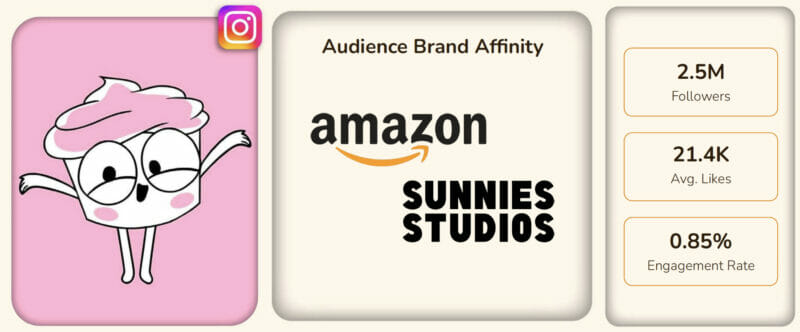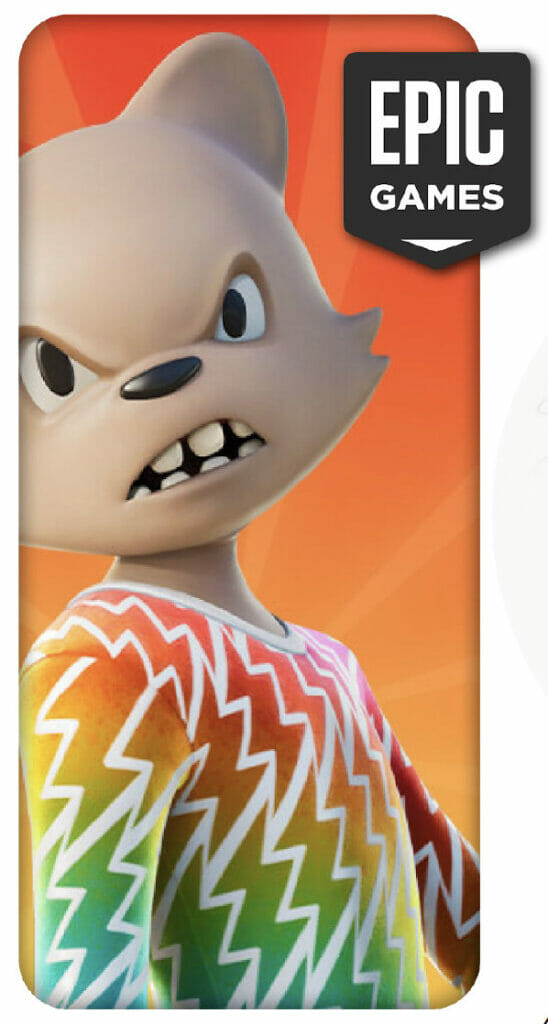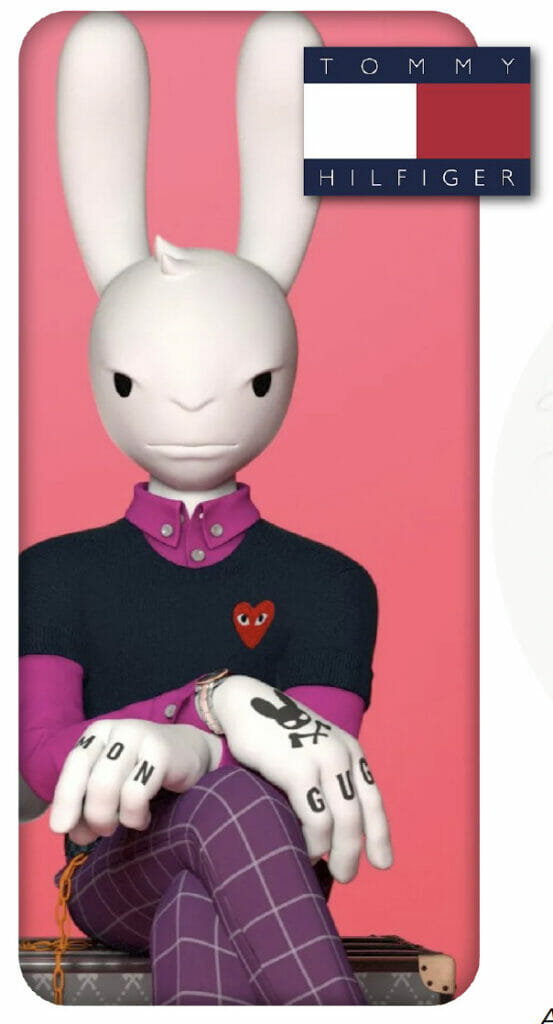The data presented in this report was collected in partnership with Offbeat Media Group. We utilized their platform Virtual Humans to pull a list of the most popular virtual creators on Instagram and TikTok.
Once we had the list of creators, we manually pulled the follower counts of each. Narrowing the list down to the 5 most-followed and 5 least-followed creators on both platforms, we then utilized Tensor Social to pull reports on each virtual creator. Through these reports, we were able to compare creators by their audience demographics, brand affinity, and their metrics, including engagement rates, views, and follower growth. This revealed a number of correlations. In addition to comparing the virtual creators to each other, we also drew comparisons between virtual and real-life creators.
This 2022 Virtual Creators Report is a deep dive into virtual creators and how they have grown in recent years. Ultimately, our analysis of the top virtual creators is intended to provide insights into the role virtual creators play in the Creator Economy.
LATEST VIRTUAL CREATORS REPORT
What are Virtual Creators?
A virtual influencer is a computer-generated character given an unwavering first-person personality and shared consistently on social media.
Virtual creators come in many styles ranging from cartoony and 2D, all the way up to hyper-realistic and human-like. Most virtual influencers are the creations of individuals, while others are entire productions built by creative teams. The potential of virtual characters, more simply called ‘avatars,’ as influencers is massive.
“This is especially fascinating considering the economics and influence of massively multiplayer online role-playing games, which ultimately inspired the birth of the avatar economy both from a technical and social standpoint. The avatar economy is, in short, all creation, consumption, and commerce associated with avatars. Virtual influencers are just one piece to the macro avatar economy movement which will define virtual worlds and the future of social media at large.”
– Christopher Travers (Co-Founder of Offbeat Media Group)
Top 10 Most Popular Virtual Creators on Instagram

Lu of Magalu by Frederico Trajano
Lu is a virtual creator who was created by Magalu, a Brazilian retail brand, in 2009; setting the stage for the rise of virtual creators in the 2010s.

Nobody Sausage by Kael Cabral
Nobody Sausage was created by artist Kael Cabral. First appearing in 2020, Nobody Sausage has become one of the top virtual creators in the world.

CB of Casas Bahia by Casas Bahia
CB is a Brazilian virtual creator created by Casas Bahia, a popular retail brand. He was created in 2017 and is the virtual mascot for the brand.

Miquela Sousa by Trevor McFedries & Sara Decou
Miquela Sousa is a virtual creator who started gaining popularity in 2016. She quickly became one of the most well-known virtual creators in the world.

Good Advice Cupcake by Loryn Brantz
Good Advice Cupcake was created by artist and author Loryn Brantz in 2018. The creator posts positive content and “good advice” on Instagram.

Top 10 Most Popular Virtual Creators on TikTok

Nobody Sausage by Kael Cabral
In addition to being the second highest-followed virtual creator on Instagram, Nobody Sausage is the highest-followed virtual creator on TikTok!

FN Meka by Brandon Le and Factory New
FN Meka is a virtual creator who first appeared in 2019. This creator is a robot rapper and has released a few songs.

Tito Lizzardo and Catty B
Tito Lizzardo and Catty B are two virtual creators who first started gaining popularity in 2020. Since then, they have become extremely popular on TikTok.

Noodle and Bun by Gottfried Roodt and Lloyd Wilgen
Noodle and Bun were created in 2020. Their TikTok page features them in animations corresponding with TikTok trends.

Janky by Paul Budnitz
Janky is a virtual creator who was created by Superplastic. First appearing in 2019, Janky has quickly become one of the top virtual creators in the world.

Gender Split of Audience
These charts demonstrate the average audience demographics of our dataset of virtual creators according to the representation of men and women.
Overall, we found that the majority of their audiences, across platforms, consist of women.

Engagement vs. Followers
This chart demonstrates the correlation between number of followers and engagement rate among the top virtual creators.

Distribution of Followers and Likes Over Country

Engagement & Views Instagram vs. TikTok
Here, we compare both platforms’ virtual creators according to their engagement, views, and followers. We found that TikTok’s top creators had the highest total followers and average views in comparison to those on Instagram. We also found that Instagram’s bottom 5 creators (from our list of the most popular virtual creators) had the highest average engagement rate overall.

Instagram Reach vs. Instagram Avg. Price/Post
This chart features the most popular creators on Instagram, demonstrating the correlation between their reach and their estimated price per post.

Engagement vs. Instagram Avg. Price/Post
In this chart, we demonstrate the correlation between the creators’ engagement and their average price per post on Instagram.

Trending Analysis vs. Follower Growth
After conducting a trending analysis for each virtual creator, we compared their trend projection to their follower growth percentage.

Instagram Followers vs. Follower Growth

This chart demonstrates the correlation between follower count and growth rate among the top virtual creators on Instagram.
TikTok Followers vs. Follower Growth

This chart demonstrates the correlation between follower count and growth rate among the top virtual creators on TikTok.
Audience Gender vs. Engagement
During our analysis, we pulled the demographic data of each creator’s audience. Here, we demonstrate the creators’ average engagement rates according to the male and female distribution of their audience. Ultimately, we found that the virtual creators with the highest engagement rate have a mostly male audience. For instance, the average engagement rate among creators with an audience that is at least 75% male had an average engagement rate of 9.14%.

Top Industries
Our analysis of the top virtual creators and their brand partnerships also revealed data on the top industry categories for these collaborations.
Utilizing Tensor Social, we pulled brand and industry affinity in order to determine which areas best suit these creators for partnerships.
In this section, we will identify the popularity of a number of industries among the top virtual creators. Additionally, we will further narrow down this data according to a multitude of metrics, including a deep dive into the top three industries: fashion, entertainment, and beauty.
Most Common Instagram Interests
Among Instagram’s top virtual creators, the most common interests are clothes & accessories and restaurants & food. We also found that the least common interests are fitness & yoga, business & career, and activewear.

Top Industries Worked with on Instagram
Through our analysis, we identified the industries within which the top creators worked. We found that Instagram’s top creators worked with brands in the fashion industry at a higher rate than any other industry. Entertainment and beauty are two other top industries we noted among the Instagram partnerships.

Average Engagement Rate vs. Industry
This chart demonstrates the average engagement rate of each industry. We found that partnerships in the sports and friends & family industries produced the highest engagement rates.

Top Brands
Recent years have seen an increasing number of brands partner with virtual creators in their influencer marketing campaigns. We have identified some of these top brands as well as some of the highest performing campaigns and brand collaborations.
High profile brands like Pacsun, Tommy Hilfiger, Samsung, Epic Games, Gucci, and more have set the stage for partnerships with virtual creators within the influencer marketing sphere. It is no coincidence that many of these brands have also embraced the rise of NFTs and The Metaverse.
Looking at prominent case studies, we will deep dive into some of the top brands that have partnered with virtual creators in their influencer marketing campaigns.

Miquela Sousa for Samsung
Miquela Sousa, or @lilmiquela on Instagram, partnered with Samsung for their #TeamGalaxy #DoWhatYouCant campaign back in 2019. According to Virtual Humans, Miquela is a virtual creator who started gaining popularity when she joined Instagram in 2016. In her career as a content creator, she has released some music, started a clothing line, and mingled with celebrities like J Balvin and Rosalía. Her partnership with Samsung included an Instagram video promotion for the Samsung Galaxy phone.


Janky for Epic Games
According to Virtual Humans, Janky is a virtual cat who started gaining popularity on Instagram in 2019. In 2021, Epic Games added Janky as a Fortnite skin available for purchase. Janky was created by Superplastic, who also created Guggimon, another character featured by Epic Games as a skin in one of Fortnite’s Battle Passes. Some of the promotional material included an Instagram video of Janky seeing himself on the screen and jumping through the TV in an attempt to enter the game.


Guggimon for Tommy Hilfiger
Guggimon, also created by Superplastic, is a virtual rabbit who identifies as a fashion horror artist. As mentioned earlier, Guggimon partnered with Epic Games in 2021. In September of 2022, Guggimon, Janky, and Dayzee, another virtual creator created by Superplastic, partnered with Tommy Hilfiger. The three creators walked on the #TommyHilfigerXRichardQuinn runway show on Roblox during NYFW.


Dayzee for Gucci
Dayzee is a virtual creator who, like Janky and Guggimon, was created by Superplastic. According to Virtual Humans, she has received a Ph.D. in aerospace engineering and is known for her love of fashion and popular music. Dayzee partnered with Gucci in January of 2021 to promote the Gucci Virtual 25 Sneakers on Instagram.


APOKI for Beaker
According to Virtual Humans, APOKI is a Korean virtual artist who has gained popularity on Instagram, YouTube, and TikTok. In September 2022, APOKI became a brand ambassador for Beaker, a Korean fashion company. The partnership is in celebration of Beaker’s 10-year anniversary, with the brand featuring an original APOKI hoodie and a number of styles modeled by the creator.
Average Engagement Rate vs. Brand Affinity

Real vs. Virtual Creators
Once we identified and analyzed the top virtual creators on Instagram and TikTok, we compared their metrics and demographics against that of a group of real creators. In this case, the term “real creators” refers to content creators whose appearance and persona connects to a real, physical person.
Through our analysis of the data from both virtual and real creators, we were able to draw conclusions regarding their following, industry affinity, trend projections, price per post, audience demographics, and other metrics.
From there, we analyzed the differences in their content, sponsored posts, and brand partnerships in order to understand the different roles these two types of creators play in not only the influencer marketing industry, but also the greater Creator Economy.
Average IG Price/Post Virtual vs. Real Influencers
This chart demonstrates the contrast in average price per post between virtual and real creators on Instagram.

Industry Affinity in Virtual vs. Real Influencers
In our comparison of virtual and real creators, we looked at what industries they are most compatible with. The starkest differences we found are in industries like food & drink, beauty, and electronics.

Trending Analysis in Top Real vs. Virtual Influencers
After conducting a trending analysis, we were able to determine which creators are trending upward and which are trending downward. The graphs above compare the top virtual and real creators to one another depending on which direction they are trending. We found that virtual creators are trending up at a higher rate than real creators.

Audience Gender of Real vs. Virtual Influencers
These charts compare the gender distribution of the audiences of the top virtual and real creators.
We found that the highest disparity was among virtual creators. Overall, virtual creators were found to have more female followers than male. This is especially relevant on Instagram, with 78.37% of the audience being women.

Views for Top Real vs. Virtual Influencers
This table compares the amount of views received by real and virtual creators on both platforms. Ultimately, we found that real creators get more views across the board.
We also found that both real and virtual creators on TikTok get more views than their counterparts on Instagram.

Editor’s Note
Creators, virtual and real, are at the heart of the Creator Economy. Through this report, we intend to highlight the increasing role that virtual creators play in this industry. Virtual creators have directly tied virtual reality and The Metaverse into social media and the influencer marketing industry, further expanding the ever-growing Creator Economy.
In recent years, we have seen virtual creators skyrocket in popularity, many of them amassing millions of followers, becoming verified on multiple social media platforms, and partnering with some of the biggest brands in the world. Additionally, in our comparison of virtual and real creators, we found that virtual creators are indeed pulling their weight.
In the coming years, we only expect the number of virtual creators to continue growing, especially as the connection between the Creator Economy and The Metaverse expands.


